Savory Nightshades: A Farmers Market Guide to Eggplants
September 22, 2022
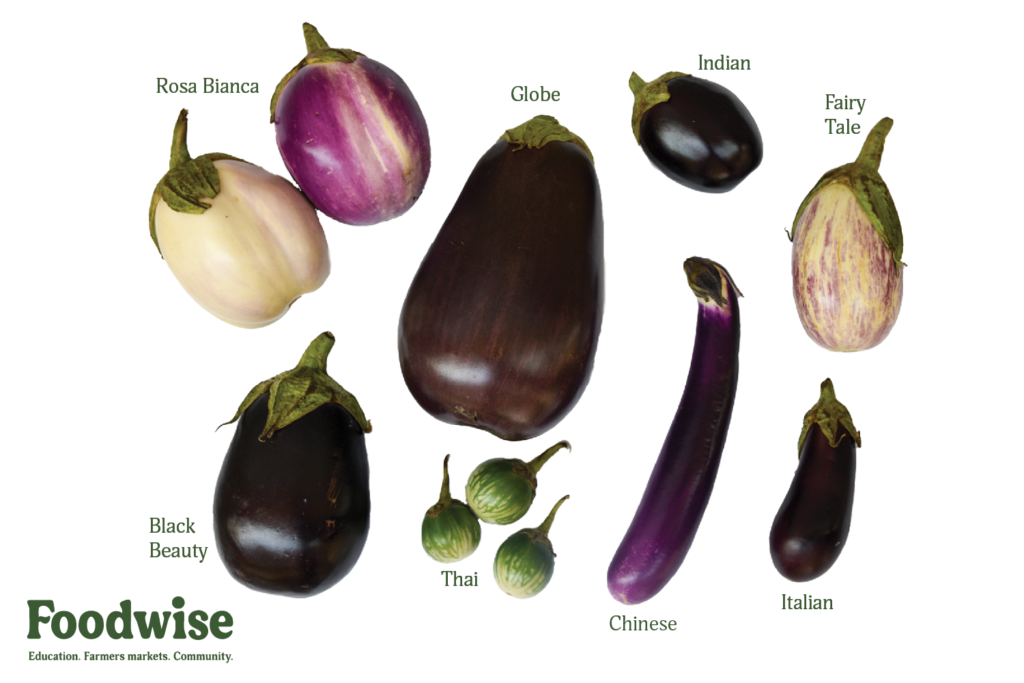
Broiled in a Filipino Ensaladang, roasted in a Palestinian Musaqa’a, or grilled in a French Ratatouille, many cuisines around the world showcase the versatility of eggplants. The plant is said to be native to India (where it continues to grow wild), Africa, or South Asia, however, there is no strict consensus. By the 16th century, eggplants had made their way to Europe, where Europeans grew them for ornamental purposes and harvested white, egg-shaped varieties that inspired the fruit’s North American name.
In the United States, the round, deep-purple Globe eggplant is the most common, but a trip to the farmers market during summer through early fall reveals that eggplants actually grow in a wide variety of shapes, sizes, and colors. Here’s a brief guide to eggplant varieties, from the purple and white-streaked Fairy Tale eggplant to the tiny watermelon-like Thai eggplant, so that you can make the most of eggplant season at the farmers market.

Choosing, Storing, and Cooking Eggplants
Along with their Nightshade (Solanaceae) family relatives including tomatoes, potatoes, and peppers, eggplant harvest season typically begins in mid-summer and continues through mid-fall. Different varieties may be available in different months, however, and you can always ask the farmer or farm stand worker about what’s currently growing on the farm.
While choosing an eggplant, look for one with glossy skin and a bright green stem, signs of peak ripeness. Freshly picked eggplants will be firm, with flesh that springs back when gently squeezed. After bringing eggplants home, you can eat them right away or store them in a cool place, such as the crisper drawer in the refrigerator.
Although eggplants are botanically classified as fruit due to their edible seeds, stick to cooking them like vegetables. To prepare an eggplant, cut off the stem and blossom end before using it whole or cutting it into pieces. Like most other vegetables, eggplants can be cooked and eaten with or without its skin.
Optionally, after cutting eggplant into pieces, you can add a generous sprinkling of salt and set it aside to drain for 30 to 60 minutes. This step helps to rid the eggplant of excess water and condenses the flesh so that it will absorb less oil while cooking.
Eggplants’ delicate flavor is brought out by cooking, and its meaty flesh is perfect for absorbing the flavors of spices and sauces. Try grilling, frying, roasting, or steaming eggplants, and check out our recipe archive for inspiration.
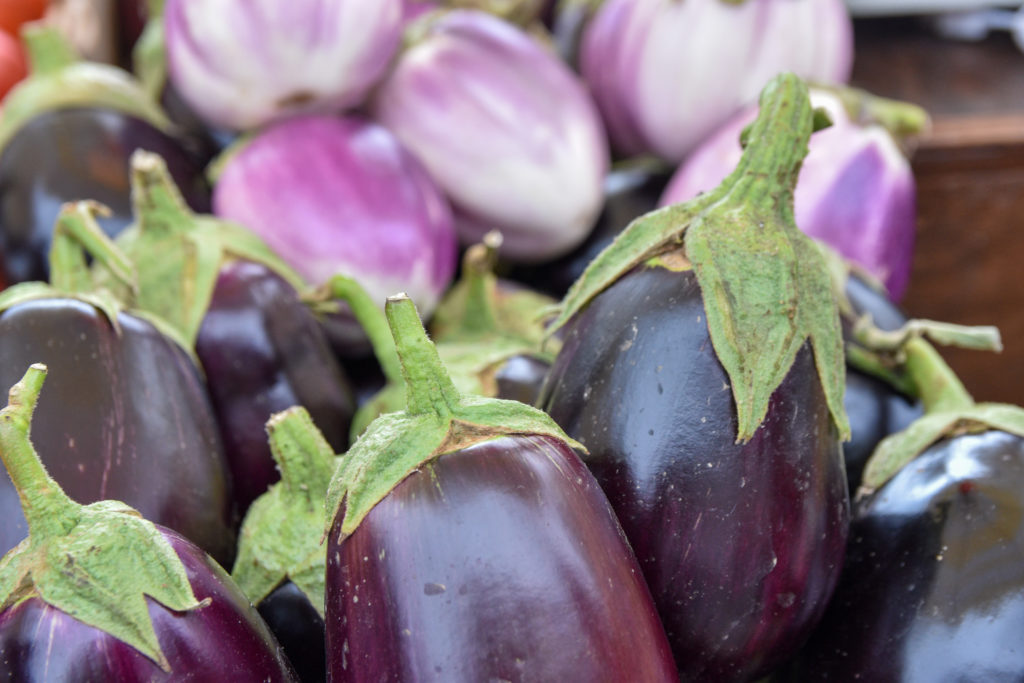
Common Types of Eggplants
American or Globe eggplant (pictured above): The most common variety in North America, the Globe eggplant, is bright purple and its size ranges quite a bit. When shopping, look for small to medium eggplants, around 6 inches in diameter. This variety’s wide surface and meaty texture make it great for slicing, breading, and frying.

Black Beauty eggplant: These century-old heirloom eggplants are large and bulb shaped, with dark purple skin. This variety is one of the meatier ones, and they typically grow to be about 8 inches and weigh more than a pound. It’s also prized for its delicate, creamy flavor. Because of its size and texture, Black Beauty eggplants are ideal for grilling.
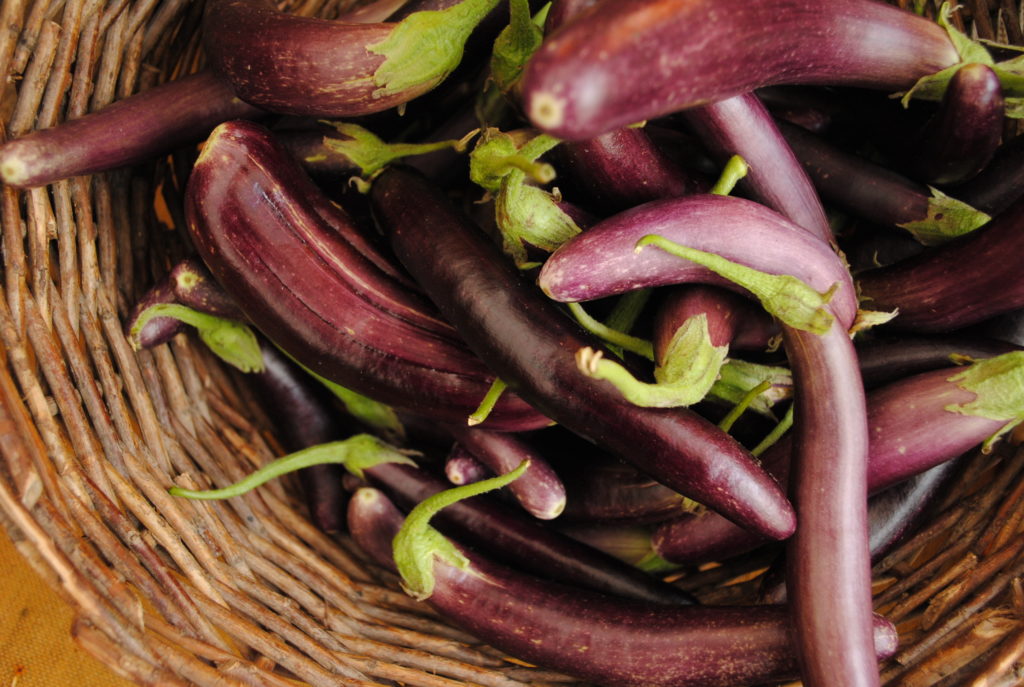
Chinese eggplant: China is the largest producer of eggplants in the world. The Chinese eggplant is more slender and lighter in color than the American eggplant. It contains fewer seeds than Globe eggplants, making it less bitter. Their velvety flesh is absorbent of sauces and spices and makes an excellent addition to stir-fries.
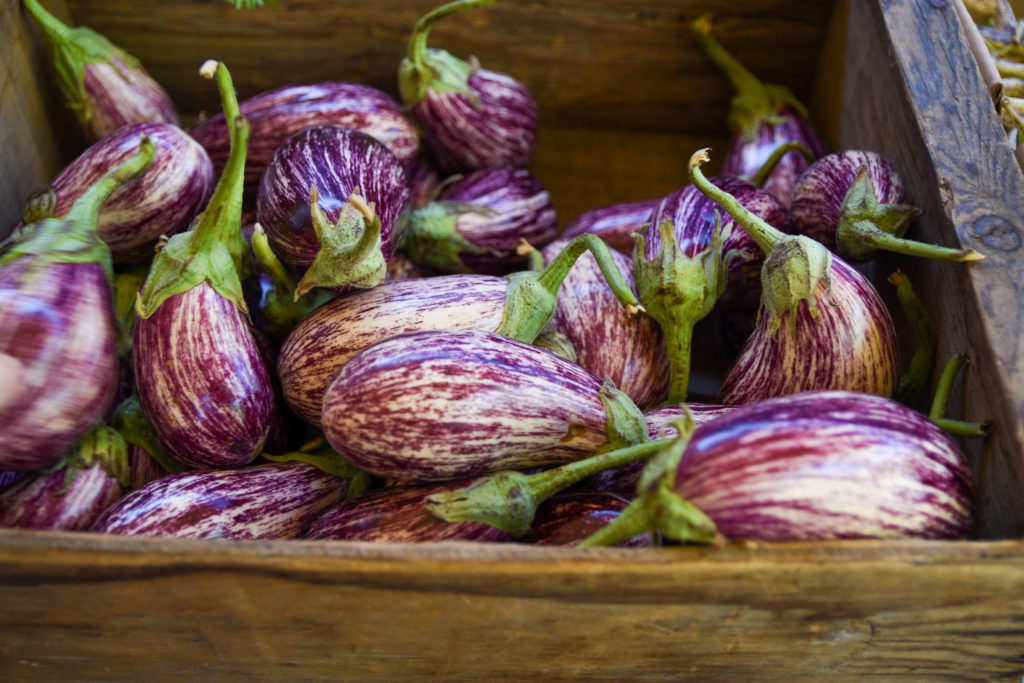
Fairy Tale eggplant: This palm-sized eggplant is marked by purple and white streaks. It has few seeds, making it sweet and creamy. Fairy Tales are ideal for roasting whole until tender. Try serving them with a creamy sauce or grilling and marinating them in a spicy curry.

Ghostbuster eggplant: Ghostbuster eggplants get their name from their white color. These long, oval eggplants grow to be about 7 inches. Because of their relative sweetness, these may be a good gateway variety for eggplant skeptics to try.
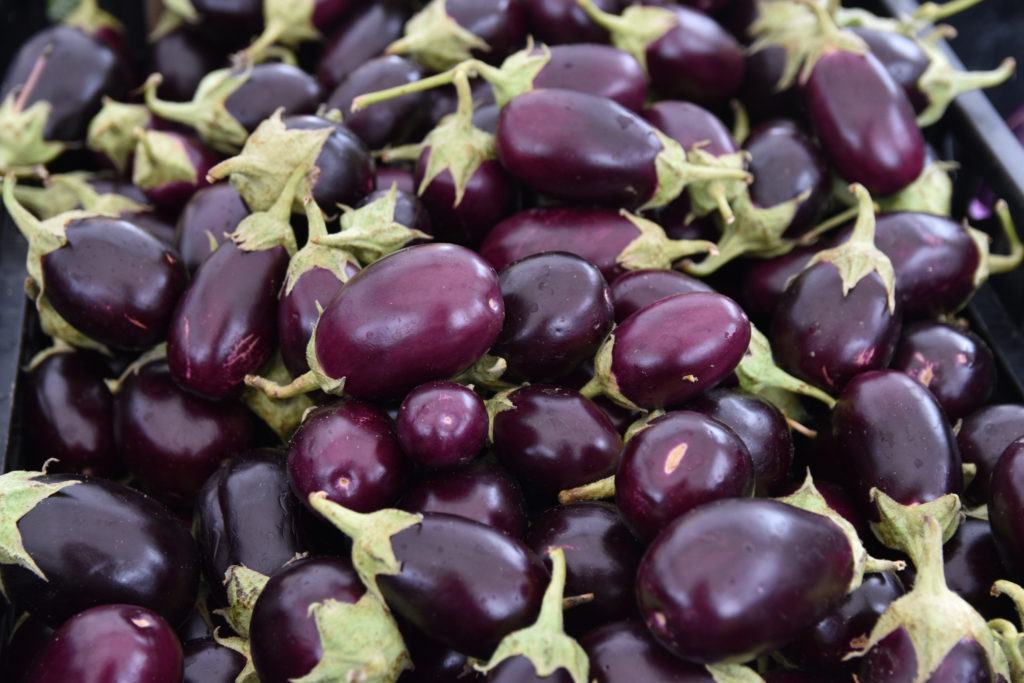
Indian eggplant: India is the second largest producer of eggplants after China. Indian eggplants are small ovals with medium-thick, dark-purple skin and crisp, white flesh. When cooked, Indian eggplants have a mild flavor with sweet notes and a creamy texture that lends well to curry recipes.
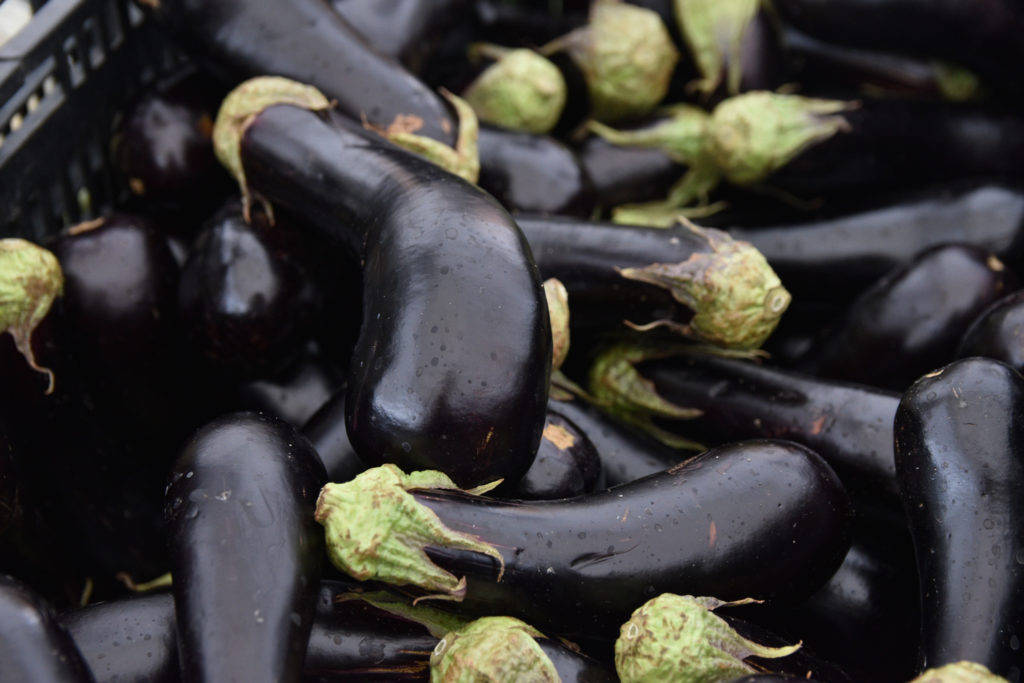
Italian eggplant: Similar in shape and color to American eggplants, Italian eggplants are smaller in size, a few inches in diameter and about 5 to 8 inches long. Their flavor tends to be more delicate and sweet than larger eggplants, and their smaller size makes them a good choice for stuffing, roasting, and broiling.
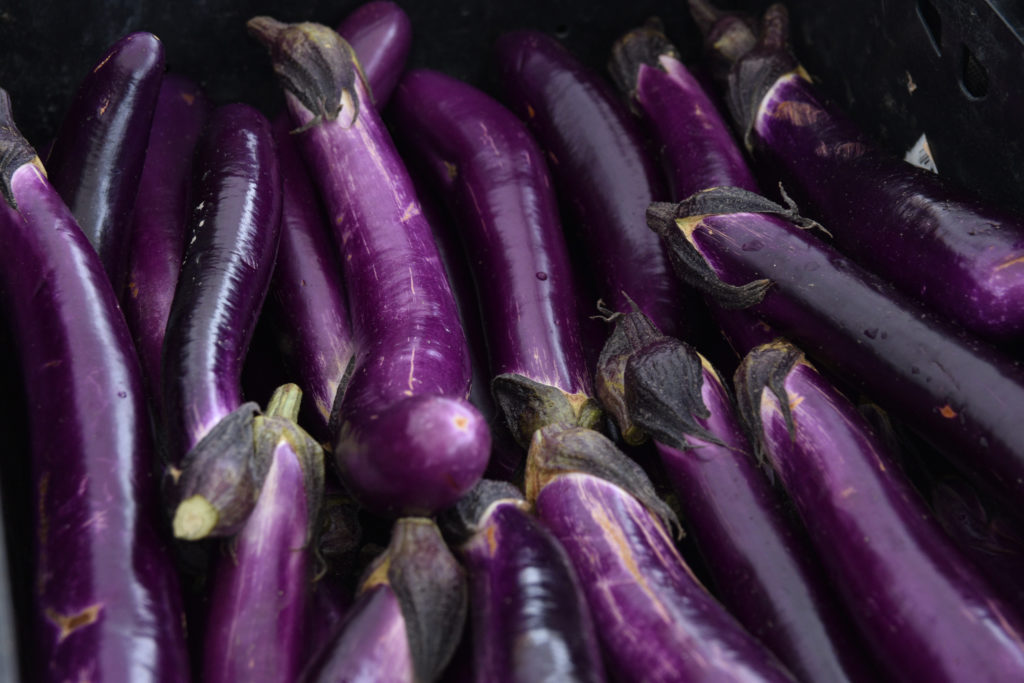
Japanese eggplant: Dark purple and gently curving Japanese eggplant are similar to Chinese eggplants in that they have tender flesh with few seeds. These eggplants are delicious grilled or added to stir-fries, and they pair well with bold flavors of garlic, ginger, and soy.
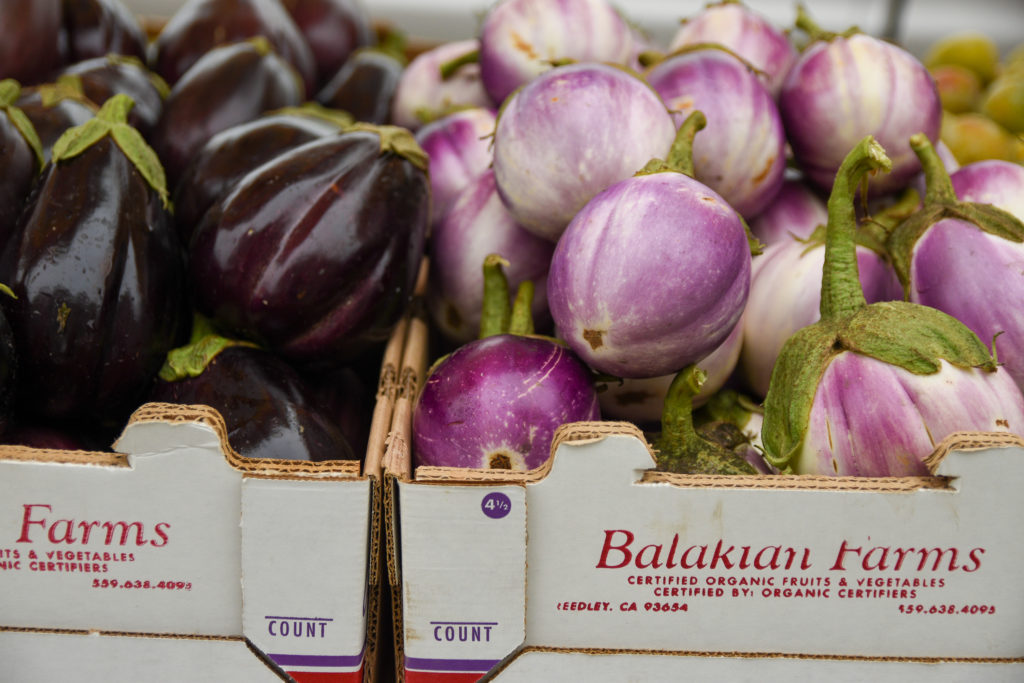
Rosa Bianca eggplant: You can recognize this Italian heirloom variety by its lavender-white skin and subtle ribbing. This fruit is picked before seed formation starts, when it’s about 5 to 6 inches, making it sweet and creamy. Rosa Bianca is perfect for stuffing with savory, garlicky fillings such as cooked Italian sausage topped with Pecorino Romano.
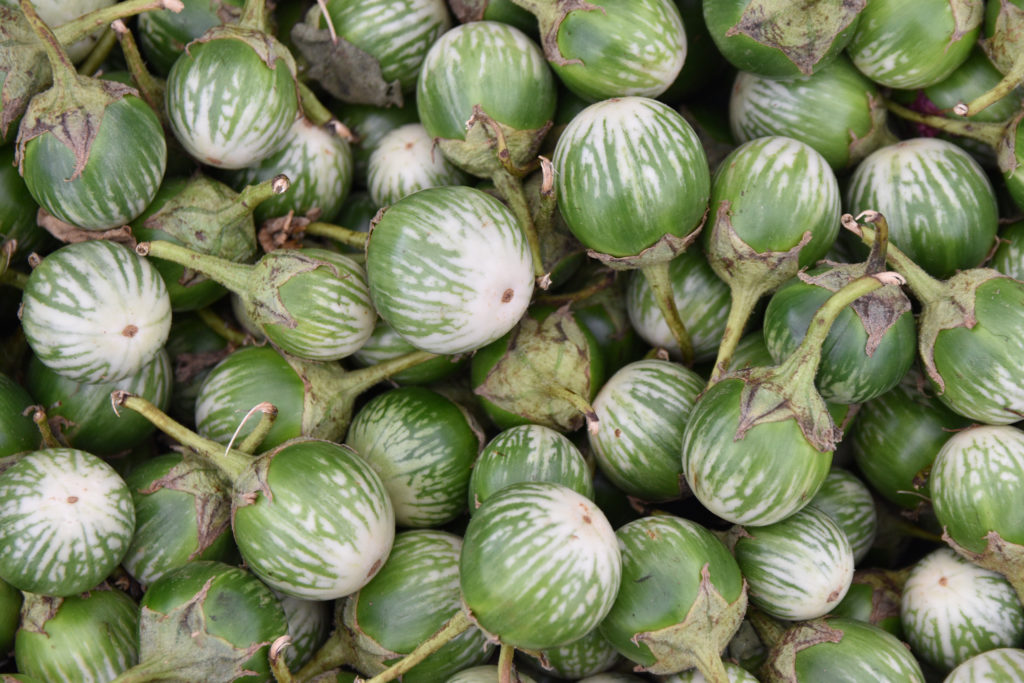
Thai Round eggplant: At first glance, you may not recognize these egg-sized, pale green fruits as eggplants. These 2-inch eggplants remain green even when they’re ripe, but you can still recognize its ripeness by checking for glossy skin. Thai eggplants are known for their mildly bitter flavor and crunchy texture, and they’re often used in hot chile or curry dishes.
Check out our recipe archive to try dishes like Ensaladang Talong, Musaqa’a, and Ratatouille. Discover more varieties of eggplants and which farms grow them at Foodwise’s farmers markets here.
Topics: Culinary, Farmers market, Produce guides, Vegetables
